-
 Bitcoin
Bitcoin $105,506.7886
5.08% -
 Ethereum
Ethereum $2,448.5436
10.64% -
 Tether USDt
Tether USDt $1.0004
0.00% -
 XRP
XRP $2.1938
10.73% -
 BNB
BNB $641.1726
2.97% -
 Solana
Solana $144.9271
9.87% -
 USDC
USDC $0.9999
-0.01% -
 TRON
TRON $0.2728
1.33% -
 Dogecoin
Dogecoin $0.1647
9.76% -
 Cardano
Cardano $0.5871
9.71% -
 Hyperliquid
Hyperliquid $37.7426
12.64% -
 Sui
Sui $2.7816
14.60% -
 Chainlink
Chainlink $13.5048
16.78% -
 Bitcoin Cash
Bitcoin Cash $450.1369
1.86% -
 UNUS SED LEO
UNUS SED LEO $9.1416
0.96% -
 Stellar
Stellar $0.2478
8.93% -
 Avalanche
Avalanche $18.2644
10.99% -
 Toncoin
Toncoin $2.9149
5.72% -
 Shiba Inu
Shiba Inu $0.0...01172
9.01% -
 Hedera
Hedera $0.1526
13.01% -
 Litecoin
Litecoin $84.6386
5.44% -
 Monero
Monero $315.4266
6.30% -
 Ethena USDe
Ethena USDe $1.0006
0.01% -
 Polkadot
Polkadot $3.4824
10.54% -
 Dai
Dai $1.0000
-0.02% -
 Bitget Token
Bitget Token $4.2707
5.83% -
 Uniswap
Uniswap $7.0582
15.65% -
 Pepe
Pepe $0.0...01003
13.82% -
 Pi
Pi $0.5454
9.30% -
 Aave
Aave $263.4696
17.20%
What does the sudden increase in the average true range (ATR) indicate?
A sudden spike in ATR signals heightened volatility in crypto markets, often due to news, sentiment shifts, or liquidity changes, urging traders to adjust stop-losses, position sizes, and risk management strategies accordingly.
Jun 24, 2025 at 06:42 pm
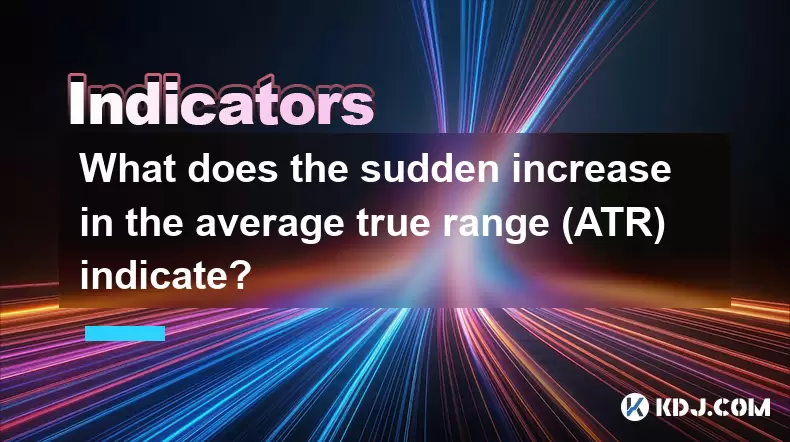
Understanding the Average True Range (ATR) in Cryptocurrency Trading
The Average True Range (ATR) is a technical indicator used by traders to measure market volatility. In the context of cryptocurrency, where prices can swing dramatically within short periods, ATR becomes an essential tool for assessing potential price movements. The ATR does not indicate the direction of the trend but rather the degree of price fluctuation. When the ATR suddenly increases, it signals a shift in volatility that could have significant implications for traders.
ATR is calculated using the true range values over a specified period, typically 14 days. The true range is the greatest of the following: current high minus current low, absolute value of the previous close minus current high, or absolute value of the previous close minus current low. This makes ATR sensitive to sudden price changes and gaps, which are common in crypto markets due to their 24/7 nature and news-driven dynamics.
What Causes a Sudden Spike in ATR?
A sudden increase in ATR often reflects heightened volatility in the market. In the cryptocurrency space, several factors can contribute to this surge:
- Major news events: Regulatory announcements, exchange hacks, or adoption updates can cause abrupt price swings.
- Market sentiment shifts: Social media trends, influencer comments, or macroeconomic developments can drive rapid changes in investor behavior.
- Liquidity changes: Large buy or sell walls being removed or added on major exchanges can create sharp movements in price.
- Technical breakouts: When a cryptocurrency breaks out of a consolidation phase, it can lead to increased volatility as traders react quickly.
Each of these scenarios can trigger a spike in ATR, signaling that the asset is experiencing unusual price action compared to its recent history.
How Does a Rising ATR Impact Trading Strategies?
For traders, especially those involved in day trading or swing trading cryptocurrencies, understanding how to interpret a rising ATR is crucial.
- Stop-loss adjustments: As ATR rises, setting static stop-loss levels may result in premature exits from trades. Traders should consider adjusting stops based on the new volatility levels.
- Position sizing: Increased volatility means higher risk per trade. Reducing position size during high ATR periods can help manage exposure.
- Entry timing: A rising ATR might suggest entering a trade only when the volatility aligns with your strategy—either riding the momentum or waiting for a pullback.
- Risk management: High ATR values require stricter adherence to risk parameters to avoid large drawdowns.
Traders who ignore ATR changes may find themselves overexposed or underprepared for sudden price swings.
Interpreting ATR Spikes in Different Market Conditions
The interpretation of a sudden ATR increase depends heavily on the broader market environment. In bullish conditions, a spike in ATR might indicate strong buying pressure and potential continuation of the uptrend. Conversely, in bearish phases, a sudden rise in ATR could signal panic selling or aggressive shorting activity.
- Bullish markets: If the price is trending upward alongside rising ATR, it suggests strong participation and confidence among buyers.
- Bearish markets: An increase in ATR during a downtrend may reflect heightened fear and capitulation among holders.
- Sideways markets: A breakout in ATR from a consolidation phase may indicate the start of a new trend.
It's important to combine ATR analysis with other tools like volume indicators, moving averages, or support/resistance levels to confirm the context of the volatility spike.
How to Visually Identify and Confirm ATR Spikes on Charts
Cryptocurrency traders commonly use platforms like TradingView, Binance, or Bybit, all of which allow users to add the ATR indicator to their charts. To identify a spike:
- Apply the ATR indicator: Go to the indicators menu and select "Average True Range".
- Set the period: Stick with the default 14-period setting unless you're analyzing intraday data, in which case lower timeframes like 7 or 5 can be more responsive.
- Look for sudden jumps: Compare current ATR readings to historical levels. A clear divergence upward indicates a spike.
- Cross-reference with price: Check if the ATR spike corresponds with a sharp price movement or gap up/down.
Visual confirmation helps traders avoid false signals and ensures they're responding to real volatility shifts rather than noise.
Frequently Asked Questions
Q1: Can ATR be used to predict price direction in crypto markets?
No, ATR is purely a volatility indicator and does not provide directional insight. It tells you how much price is moving, not where it’s going.
Q2: Is a high ATR always a sign of a good trading opportunity?
Not necessarily. While high ATR indicates volatility, it also implies higher risk. Whether it presents a good opportunity depends on your trading strategy and risk tolerance.
Q3: Should I adjust my trading strategy every time ATR spikes?
Adjustments depend on your trading timeframe and objectives. Short-term traders may need to adapt more frequently, while long-term investors might view ATR spikes as temporary noise.
Q4: How does ATR compare to other volatility indicators like Bollinger Bands or Standard Deviation?
ATR focuses on absolute price range without considering standard deviations or mean reversion. Bollinger Bands incorporate volatility through standard deviation and provide price boundaries, whereas ATR gives a raw measure of volatility intensity.
Disclaimer:info@kdj.com
The information provided is not trading advice. kdj.com does not assume any responsibility for any investments made based on the information provided in this article. Cryptocurrencies are highly volatile and it is highly recommended that you invest with caution after thorough research!
If you believe that the content used on this website infringes your copyright, please contact us immediately (info@kdj.com) and we will delete it promptly.
- BlockDAG's Bold Move: A $100 Million Token Airdrop Fuels Ecosystem Growth
- 2025-06-25 00:45:12
- Aero Crypto (AERO): 100x Altcoin or Just Jumped 14%? Decoding the Hype
- 2025-06-25 00:25:12
- Banish Flies with a Coin Trick? The Buzz Around This Bizarre Hack
- 2025-06-25 00:45:12
- Bitcoin, Mortgages, and Finance: A New Era?
- 2025-06-25 00:25:12
- Mastercard, Fiserv, and Stablecoins: A New Era of Payments?
- 2025-06-25 00:55:12
- Circle Stock, Stablecoin Competition, and Wall Street: A New York Minute
- 2025-06-25 00:55:12
Related knowledge

What does it mean that the ATR indicator suddenly doubles after hitting a new low this year?
Jun 24,2025 at 11:57pm
Understanding the ATR IndicatorThe Average True Range (ATR) is a technical analysis indicator used to measure market volatility. Developed by J. Welles Wilder, ATR calculates the average price range between a security’s high and low over a specific period—typically 14 periods. It does not indicate the direction of price movement but rather how volatile ...
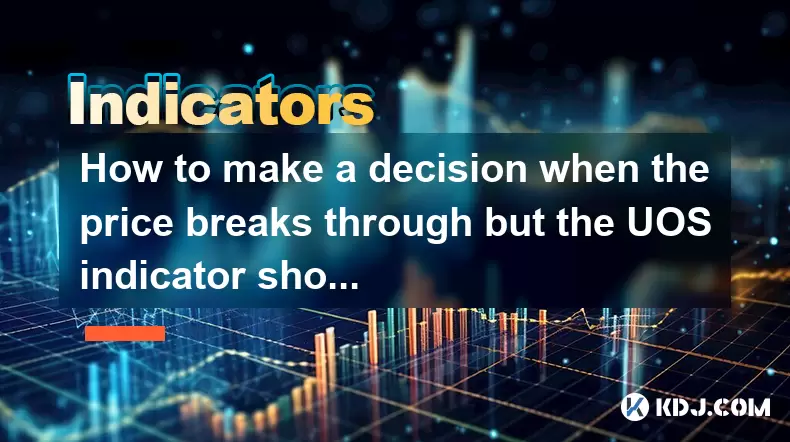
How to make a decision when the price breaks through but the UOS indicator shows a top divergence?
Jun 24,2025 at 11:42pm
Understanding the UOS Indicator and Price BreakthroughsThe Ultimate Oscillator (UOS) is a momentum oscillator that combines multiple timeframes to provide a more accurate picture of market momentum. When traders observe a price breakthrough — where the price moves above a key resistance level — but the UOS indicator shows a top divergence, it creates a ...

How to judge that the price breaks through the cloud but the hysteresis line has not turned?
Jun 24,2025 at 10:43pm
Understanding the Ichimoku Cloud and Its ComponentsIn technical analysis, the Ichimoku Cloud, also known as the Ichimoku Kinko Hyo, is a powerful tool used by traders to gauge momentum, trend direction, and potential support or resistance levels. The cloud itself is composed of multiple lines: Tenkan-sen (conversion line), Kijun-sen (base line), Senkou ...
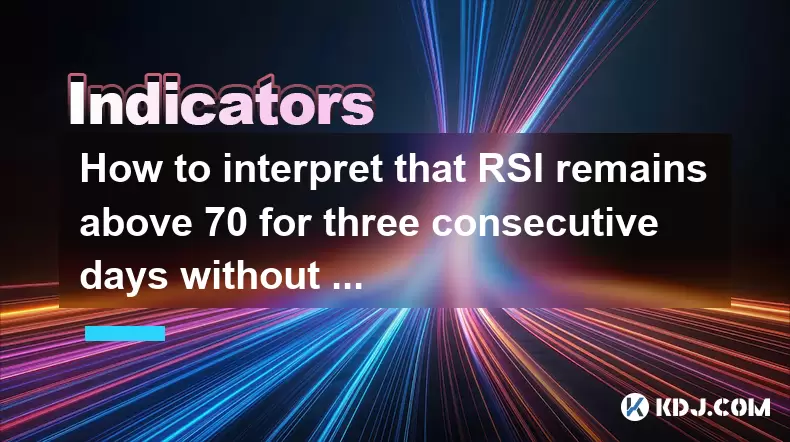
How to interpret that RSI remains above 70 for three consecutive days without falling back?
Jun 24,2025 at 11:14pm
Understanding the RSI Indicator in Cryptocurrency TradingThe Relative Strength Index (RSI) is a momentum oscillator used to measure the speed and change of price movements. Typically, it ranges from 0 to 100 and is widely used by traders to identify overbought or oversold conditions in an asset. In cryptocurrency trading, where volatility is high and tr...
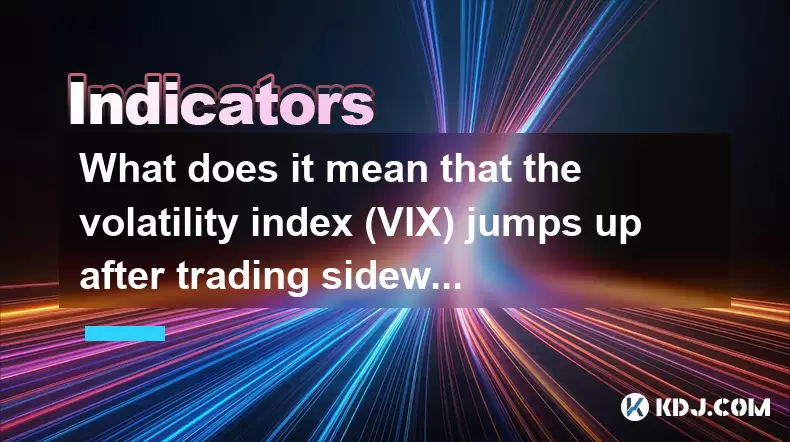
What does it mean that the volatility index (VIX) jumps up after trading sideways at a low level?
Jun 24,2025 at 09:35pm
Understanding the Volatility Index (VIX)The Volatility Index (VIX), often referred to as the 'fear gauge,' is a real-time market index that represents the market's expectation of 30-day forward-looking volatility. It is calculated by the Chicago Board Options Exchange (CBOE) based on the price inputs of S&P 500 index options. In the context of cryptocur...
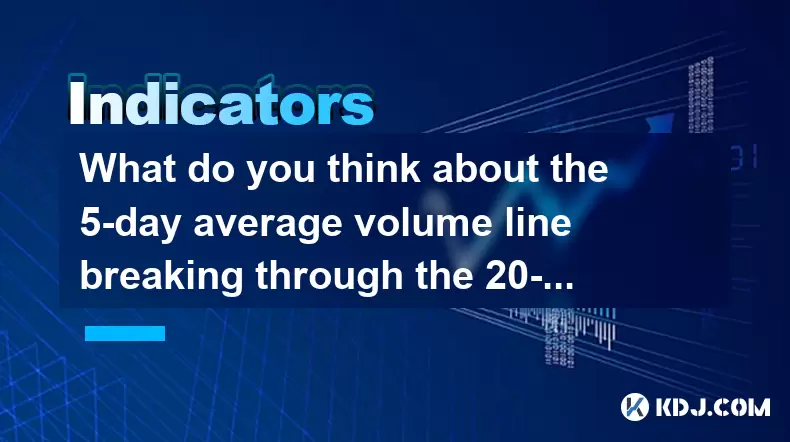
What do you think about the 5-day average volume line breaking through the 20-day average volume line but the price is stagnant?
Jun 24,2025 at 11:50pm
Understanding Volume Indicators in Cryptocurrency TradingIn cryptocurrency trading, volume is one of the most crucial indicators that traders rely on to gauge market sentiment and potential price movements. Volume represents the total number of assets traded over a specific period, and when analyzed using moving averages like the 5-day and 20-day volume...

What does it mean that the ATR indicator suddenly doubles after hitting a new low this year?
Jun 24,2025 at 11:57pm
Understanding the ATR IndicatorThe Average True Range (ATR) is a technical analysis indicator used to measure market volatility. Developed by J. Welles Wilder, ATR calculates the average price range between a security’s high and low over a specific period—typically 14 periods. It does not indicate the direction of price movement but rather how volatile ...

How to make a decision when the price breaks through but the UOS indicator shows a top divergence?
Jun 24,2025 at 11:42pm
Understanding the UOS Indicator and Price BreakthroughsThe Ultimate Oscillator (UOS) is a momentum oscillator that combines multiple timeframes to provide a more accurate picture of market momentum. When traders observe a price breakthrough — where the price moves above a key resistance level — but the UOS indicator shows a top divergence, it creates a ...

How to judge that the price breaks through the cloud but the hysteresis line has not turned?
Jun 24,2025 at 10:43pm
Understanding the Ichimoku Cloud and Its ComponentsIn technical analysis, the Ichimoku Cloud, also known as the Ichimoku Kinko Hyo, is a powerful tool used by traders to gauge momentum, trend direction, and potential support or resistance levels. The cloud itself is composed of multiple lines: Tenkan-sen (conversion line), Kijun-sen (base line), Senkou ...

How to interpret that RSI remains above 70 for three consecutive days without falling back?
Jun 24,2025 at 11:14pm
Understanding the RSI Indicator in Cryptocurrency TradingThe Relative Strength Index (RSI) is a momentum oscillator used to measure the speed and change of price movements. Typically, it ranges from 0 to 100 and is widely used by traders to identify overbought or oversold conditions in an asset. In cryptocurrency trading, where volatility is high and tr...

What does it mean that the volatility index (VIX) jumps up after trading sideways at a low level?
Jun 24,2025 at 09:35pm
Understanding the Volatility Index (VIX)The Volatility Index (VIX), often referred to as the 'fear gauge,' is a real-time market index that represents the market's expectation of 30-day forward-looking volatility. It is calculated by the Chicago Board Options Exchange (CBOE) based on the price inputs of S&P 500 index options. In the context of cryptocur...

What do you think about the 5-day average volume line breaking through the 20-day average volume line but the price is stagnant?
Jun 24,2025 at 11:50pm
Understanding Volume Indicators in Cryptocurrency TradingIn cryptocurrency trading, volume is one of the most crucial indicators that traders rely on to gauge market sentiment and potential price movements. Volume represents the total number of assets traded over a specific period, and when analyzed using moving averages like the 5-day and 20-day volume...
See all articles
























































































